Introduction
From the Rule of the Double Bounce to the Scoring System, each rule plays a crucial role in ensuring fair play and strategic gameplay. Understanding these 10 rules will not only enhance your enjoyment of the game but also give you a competitive edge on the pickleball court. But it doesn’t stop there. Equipping yourself with the right gear and adopting effective strategies and tactics can further elevate your performance. So, let’s dive in and explore the rules, equipment, and strategies that will set you on the path to pickleball success.
Here Are The10 Rules
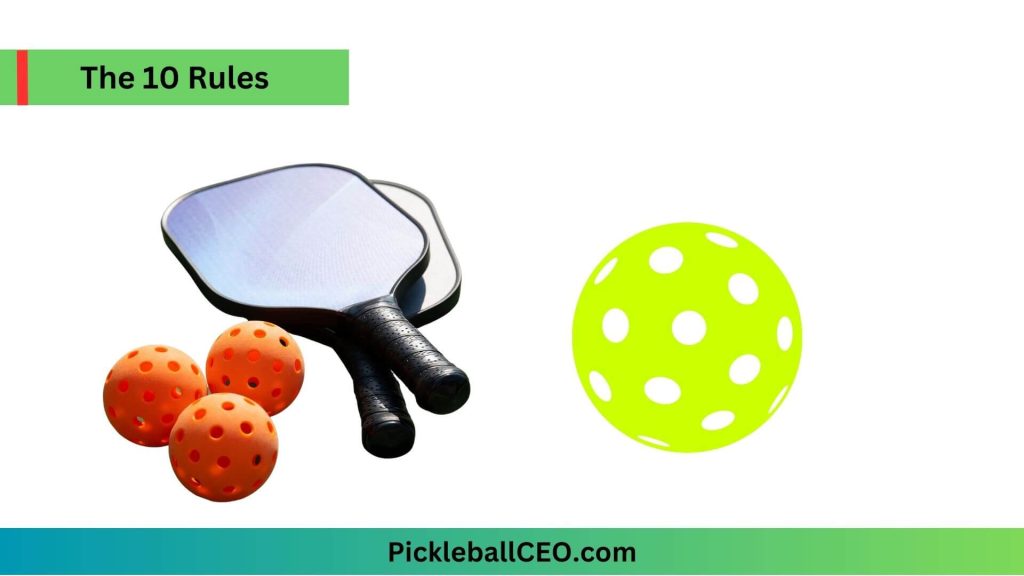

1. Rule of the Double Bounce
The first rule in pickleball states that each team must let the ball bounce once on their side before attempting to volley it. After the double bounce, players can either volley
2. Non-Volley Zone (NVZ)
Also known as the “kitchen,” the non-volley zone is a seven-foot area on both sides of the net. Players cannot enter this zone and hit a volley, except when the ball bounces in this area. Staying out of the NVZ prevents players from gaining an unfair advantage and encourages strategic shot placement.
3. The “Fault” Rule
A fault occurs when a player fails to serve the ball into the proper service court or violates any other serving rule. If the server commits a fault, the opposing team gains a point or the serve. Understanding the fault rules is crucial for maintaining fairness and order during the game.
4. Serving Rotation
In pickleball, serving rotation is used to determine who serves and from which side of the court. At the start of the game, the serving team is awarded only one serve. When they lose a rally, the opposing team gains the serve, and the players rotate positions accordingly. Familiarize yourself with the serving rotation rules
5. Out-of-Bounds
If the ball lands outside the boundary lines, it is considered out-of-bounds. To maintain fair play, players must pay close attention to the sidelines and the baseline to determine whether a ball is in or out. If the ball is out, the opposing team is awarded the point.
6. “Kitchen” Line Rule
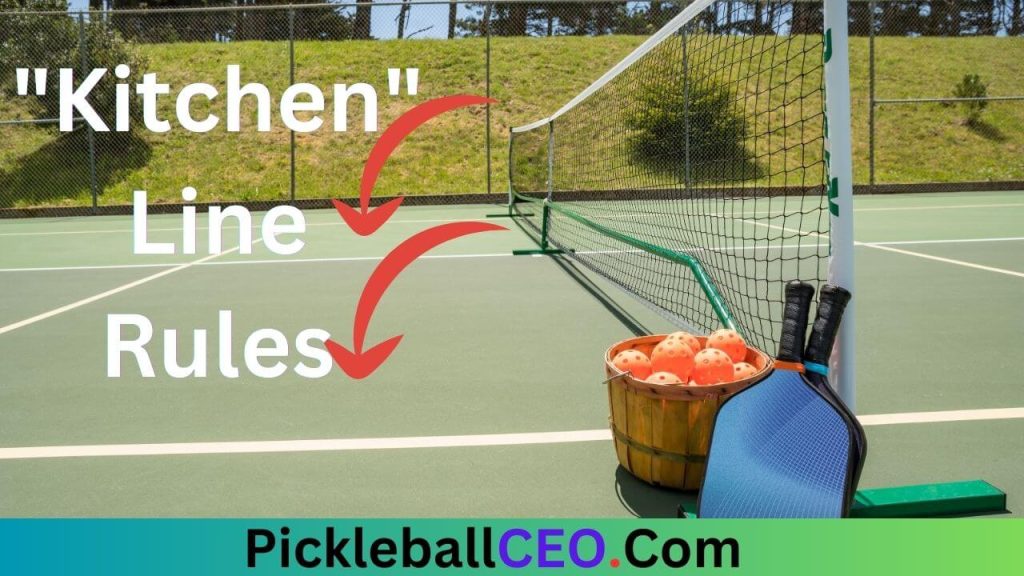

When a player hits a volley and their momentum carries them into the non-volley zone
7. No Volley Zone Foot Fault
A foot fault occurs when a player serves or volleys the ball while their foot is touching or beyond the non-volley zone line. To avoid foot faults, players must maintain proper positioning and ensure their feet do not cross into the non-volley zone.
8. Rule of Let Serves
If the serve hits the net and lands within the proper service court, it is considered a let and does not count as a fault. Let serves provide players with an opportunity to redo their serve without any penalties.
9. Two-Bounce Rule
After the initial double bounce, the two-bounce rule comes into effect. This rule states that each team must let the ball bounce once on their side before they can volley it. This ensures a fair and extended rally, allowing players to showcase their skills and strategy.
10. Scoring System
Understanding the scoring system is crucial in pickleball. Points are scored only by the serving team, and games are typically played to 11 or 15 points, with a two-point lead required for victory. Familiarize yourself with the various scoring scenarios, such as side out, to navigate the game effectively.
Equipment and Attire:
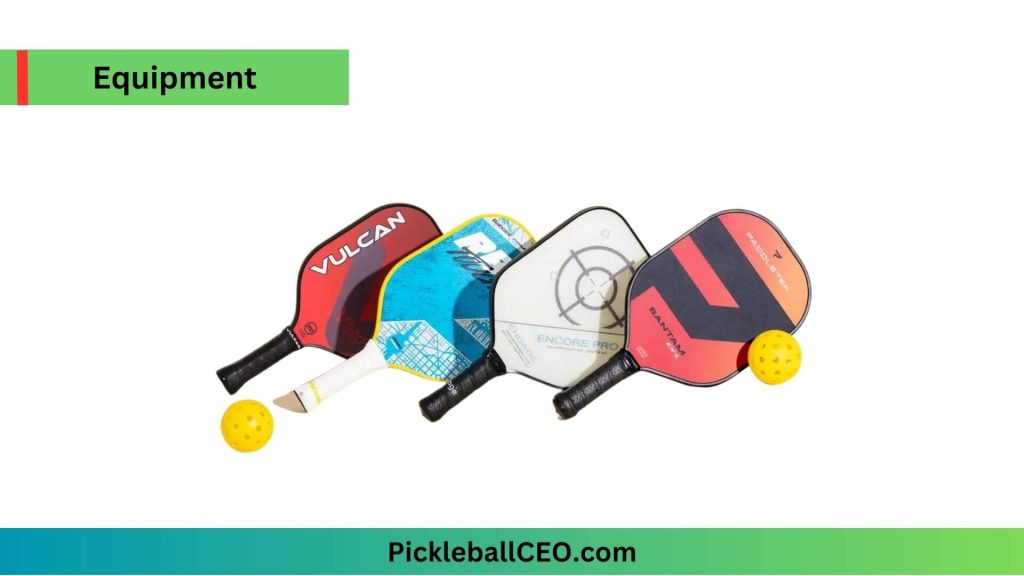

When it comes to playing pickleball, having the right equipment and attire can significantly impact your performance and overall enjoyment of the game. Here are some essential considerations for selecting the right equipment and ensuring you are properly outfitted for pickleball.
1. Paddles
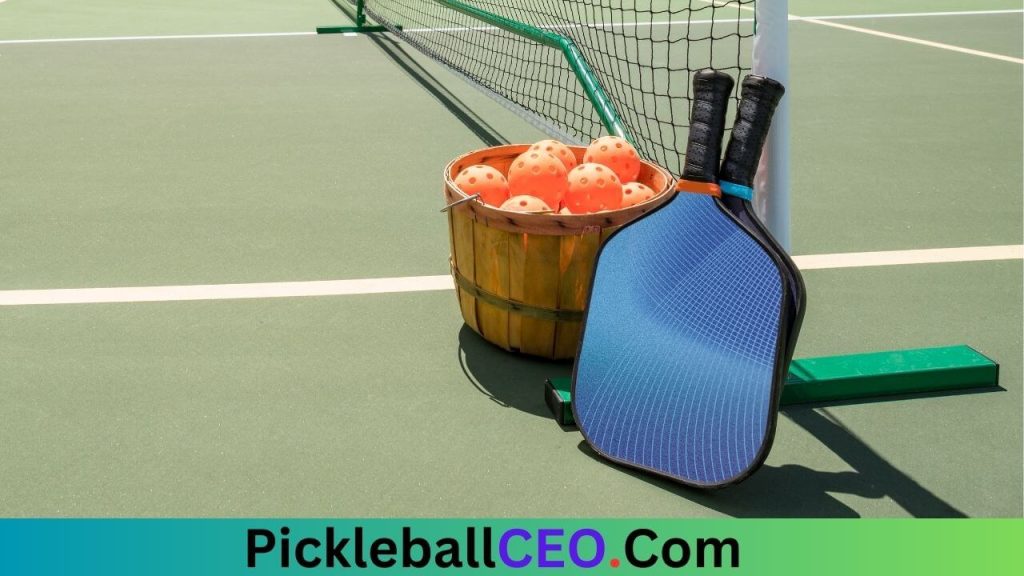

Pickleball paddles come in various materials, sizes, and weights. Choosing the right paddle is crucial for your playing style and comfort. Consider factors such as grip size, weight distribution, and face material. A paddle with a comfortable grip that suits your hand size and a weight that feels balanced can enhance your control and power on the court. Additionally, the face material, commonly composed of composite, graphite, or wood, can influence the level of responsiveness and touch you experience during play. Take the time to test different paddles or seek advice from experienced players to find the one that suits you best.
2. Balls
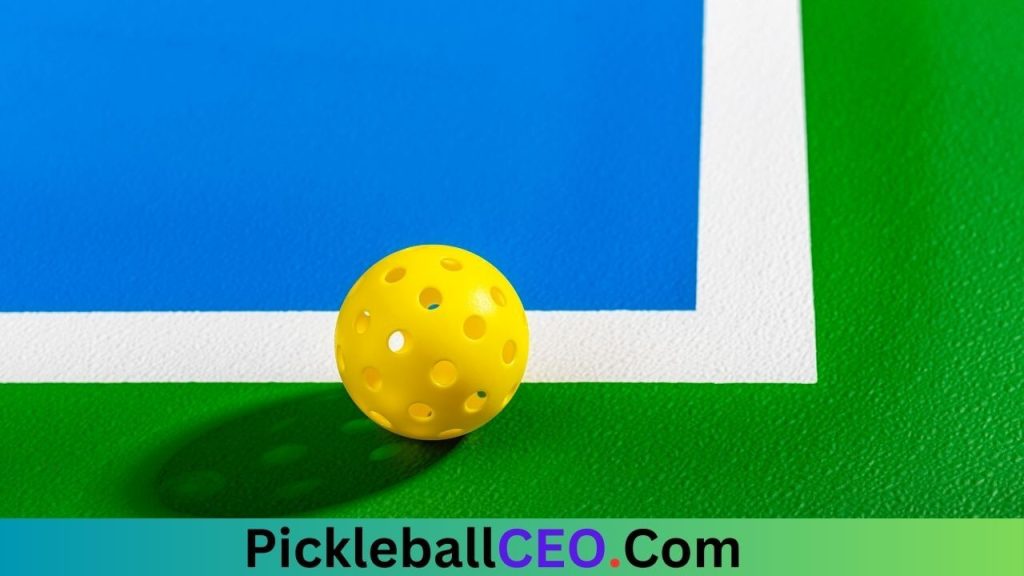

Pickleballs are distinct from other balls used in sports like tennis or ping pong. They are designed with specific characteristics to optimize gameplay. Pickleballs have smaller holes and a unique bounce, allowing for a slower pace and increased control. When selecting pickleballs, look for ones that are approved by the USA Pickleball Association (USAPA) to ensure they meet the official standards of the game. Using proper pickleballs will enhance the consistency and fairness of play.
3. Footwear


Proper footwear is vital for pickleball to ensure your safety and agility on the court. Look for shoes specifically designed for court sports that provide good support, stability, and traction. Opt for shoes with non-marking soles to prevent leaving marks on the playing surface. The right footwear can help reduce the risk of injuries, such as ankle sprains, and enable you to move quickly and confidently during intense rallies.
4. Clothing


Choosing appropriate clothing for pickleball allows for comfortable movement and temperature regulation. Opt for lightweight, breathable fabrics that wick away moisture to keep you dry and cool during gameplay. Consider wearing clothing that allows freedom of movement, such as athletic shorts, skirts, or moisture-wicking performance shirts. Additionally, it’s important to dress in layers if playing in outdoor or fluctuating temperature conditions to adjust to changes comfortably.
Remember, wearing a hat, sunglasses, and sunscreen is essential for outdoor play to protect yourself from the sun’s harmful rays. Stay hydrated by bringing a water bottle and consider using sweatbands or wristbands to manage perspiration.
By investing in quality equipment and wearing appropriate attire, you can enhance your comfort, mobility, and overall performance on the pickleball court. Take the time to find the right paddle, choose approved balls, wear proper footwear, and dress in comfortable clothing. This will allow you to fully focus on the game, enjoy playing pickleball, and make the most of your time on the court.
Strategies and Tactics: Gaining the Advantage in Pickleball Matches
By understanding and implementing key concepts such as dinking, lobbing, and third-shot drops, you can take control of the game and increase your chances of success. Let’s delve into these strategies and tactics and explore when and how to use them effectively.
- Dinking: Dinking is a strategy that involves hitting soft, controlled shots over the net, just clearing the non-volley zone. The aim is to keep the ball low and force your opponents into making mistakes or hitting a ball that can be attacked. Dinking is particularly useful in close-quarter situations near the net, as it allows you to maintain control while putting pressure on your opponents. Use dinking when your opponents are positioned closer to the net or when you want to slow down the pace of the game and create opportunities for offensive shots.
- Lobbing: Lobbing is a strategic tactic that involves hitting high shots that arc over your opponents’ heads and land deep in their court. This strategy is effective when your opponents are positioned close to the net or when you’re caught in a defensive position. A well-executed lob can force your opponents to retreat towards the baseline, giving you an opportunity to reposition yourself and regain control of the point. Use lobbing sparingly and strategically to disrupt your opponents’ rhythm and buy yourself time to recover.
- Third-Shot Drops: The third-shot drop is a crucial tactic used after the serve and return. It involves hitting a softly placed shot, usually with backspin, that lands just beyond the non-volley zone. The aim is to force your opponents to hit an upward shot, allowing you to regain control of the net. The third-shot drop is typically employed when you’re the serving team and your opponents are at the net, putting pressure on you. By executing a well-placed drop shot, you can neutralize their offensive position and set yourself up for a more advantageous position on the court.
- Varying Shot Selection: One key aspect of strategic play in pickleball is varying your shot selection. By mixing up your shots and not becoming predictable, you can keep your opponents off balance and make it harder for them to anticipate your next move. This involves incorporating a combination of dinks, lobs, drives, and volleys into your gameplay. By adapting your shots to the situation at hand, you can exploit your opponents’ weaknesses and create opportunities for winners.
- Court Awareness and Shot Placement: Having a keen sense of court awareness and understanding shot placement can significantly enhance your gameplay. Pay attention to your opponents’ positioning and target open spaces on the court. Aim for the sidelines, corners, or areas where your opponents have difficulty reaching the ball. By consistently hitting to these strategic locations, you can force your opponents into difficult defensive positions and increase your chances of winning points.
Final Thoughts
Mastering the game of pickleball requires not only a solid understanding of the rules but also the right equipment and a strategic approach to gameplay. By familiarizing yourself with the ten essential rules of pickleball, including the double bounce, non-volley zone, fault rule, serving rotation, out-of-bounds, and others, you can ensure fair play and a smooth game flow. Additionally, selecting the appropriate equipment, such as the paddle and pickleballs, and wearing proper attire, including footwear and clothing, will enhance your performance and comfort on the court.
By implementing effective strategies and tactics like dinking, lobbing, third-shot drops, varying shot selection, and court awareness, you can gain an advantage over your opponents and increase your chances of success. Whether you’re a beginner or an experienced player, understanding and applying these principles will elevate your pickleball game and contribute to an enjoyable and competitive playing experience. So grab your paddle, hit the court, and make the most of your pickleball journey!







Comments (3)
Elevate Your Pickleball Game with These 11 Powerful Drillssays:
June 27, 2023 at 4:15 am[…] This drill prepares you mentally and physically for real-game scenarios, allowing you to apply your volley skills […]
5 of the Best Pickleball Shots Every Player Needs to Know - Pickleball CEOsays:
July 23, 2023 at 4:09 am[…] Remember to use shot selection wisely and adapt them to different game scenarios. By incorporating these shots into your game, you will enhance your overall performance and elevate your pickleball skills to new heights. So, get out on the court, practice these shots, and enjoy the thrill of mastering the best pickleball shots every player needs to know! […]
5 Tips to Master Your Pickleball Spin Serve - Pickleball CEOsays:
July 29, 2023 at 6:15 pm[…] remember the rule that the serve in pickleball must be made underhand and that the paddle should be moving in an upward arc at the point of contact […]